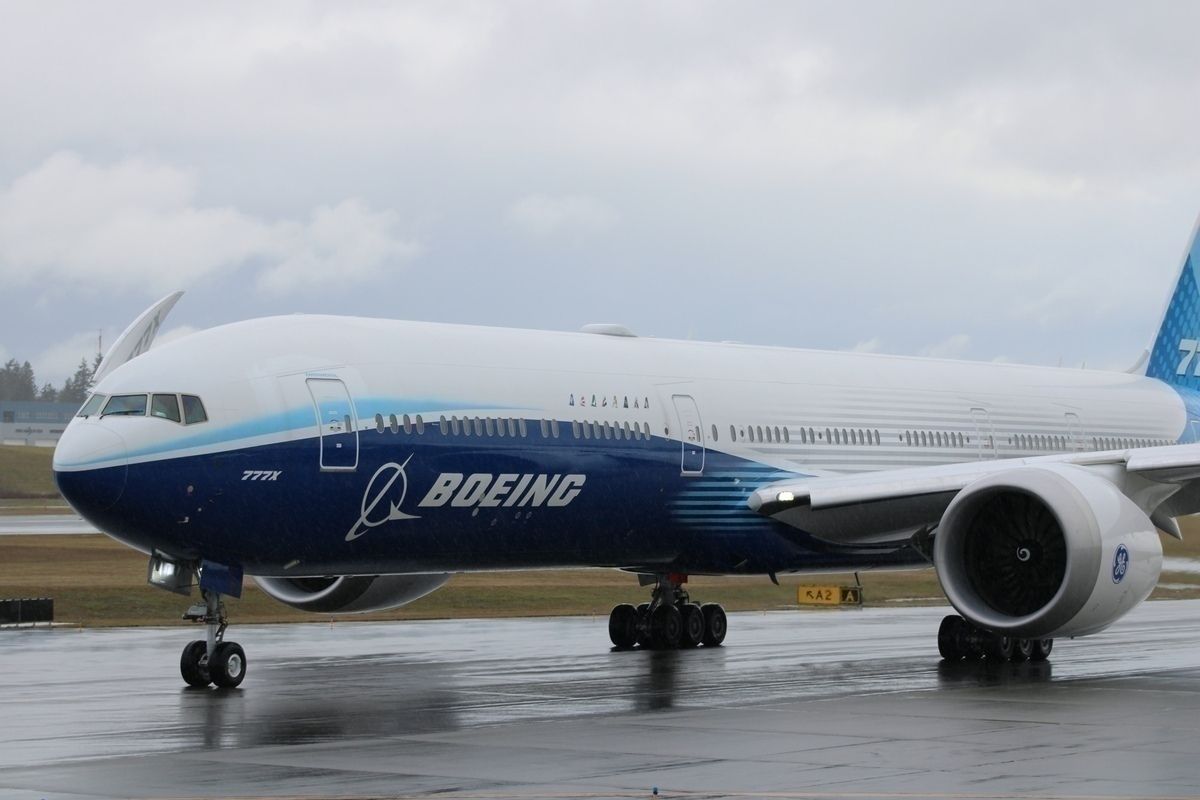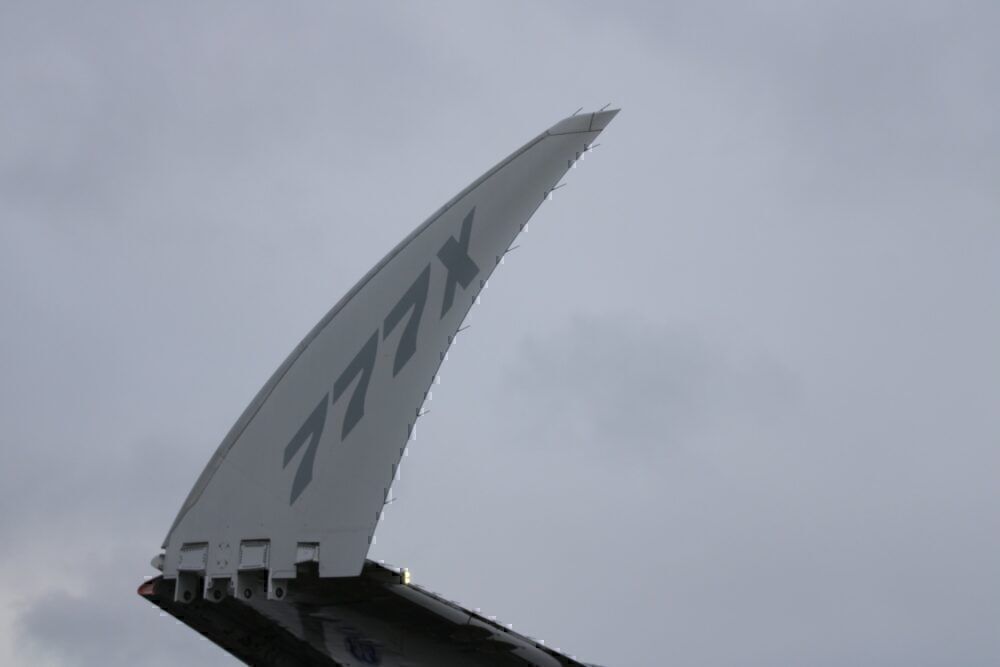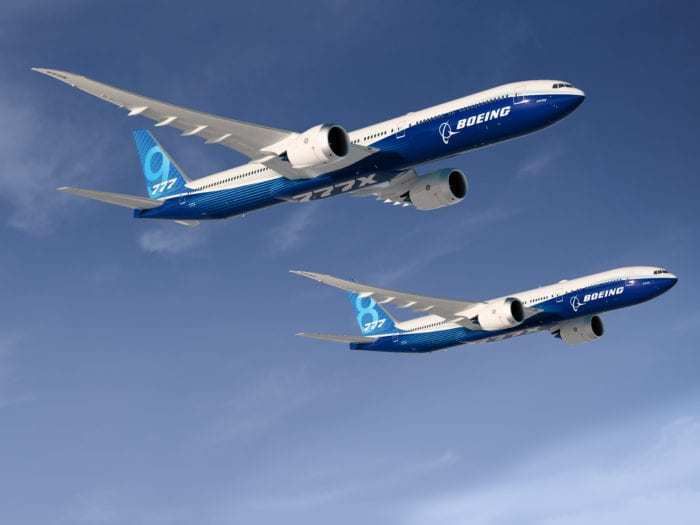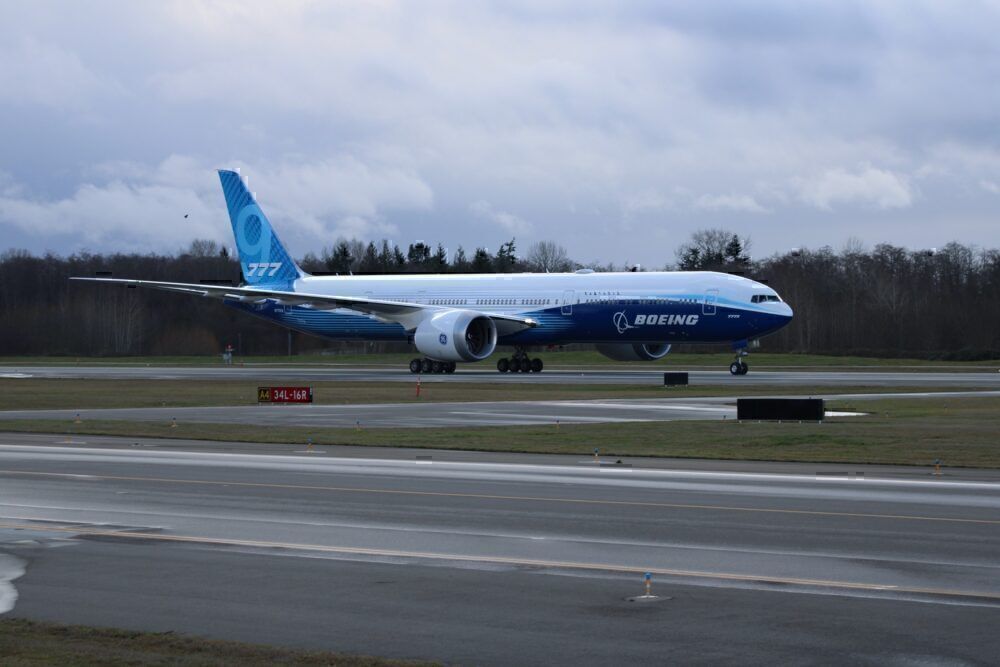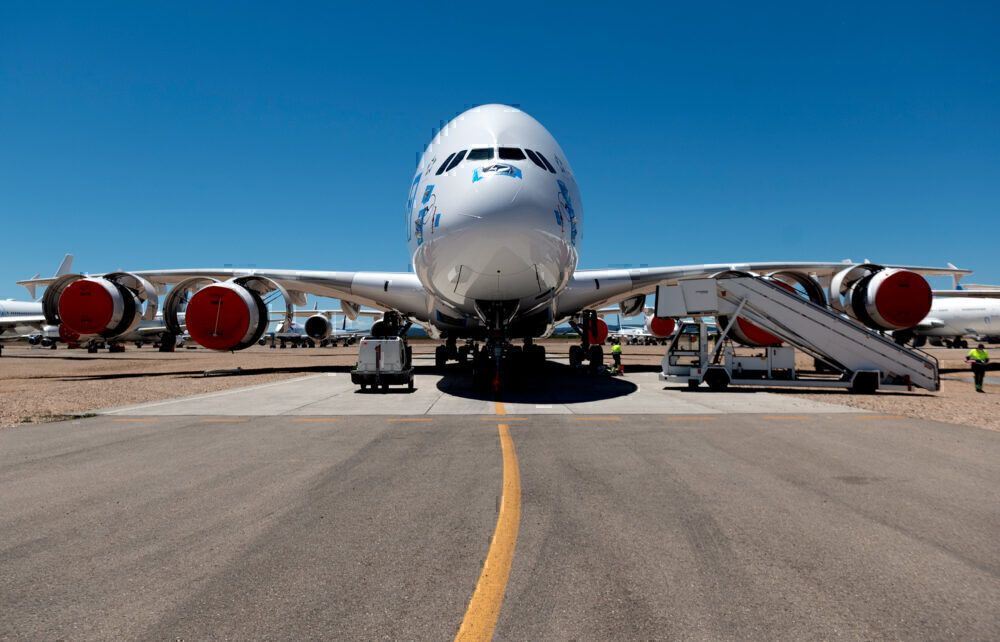Boeing's 777X is getting ready to enter commercial service. The next generation of Boeing's flagship twinjet, the aircraft comes in two variants: the 777-8 and 777-9. However, one special version of the 777X, the 777-10X, has not been heard of in some time.
Will Boeing end up building the 777-10X? Or is it just a pipe dream with no real-world application?
What is the Boeing 777-10X?
According to Bloomberg, the Boeing 777-10X is a further stretch of the 777X series that will include four more rows than the 777-9. This would increase the type's seat count to around 450 passengers.
This would put the 777-10X in the same league as the Airbus A380 and serve as a kind of successor to the 747 program. Unlike the A380, the Boeing 777 series does not require special gates at airports and thus is far more flexible for airlines. The aircraft also has folding wingtips, making the 777X accessible across airports the 777 currently can fly to.
Some potential customers include Emirates or Singapore Airlines and other airlines that need to fly large numbers of passengers efficiently without paying for four engines worth of fuel.
How does the 777-10X compare to the other variants?
So far, Boeing has revealed that there will be two mainline Boeing 777Xs.
- Boeing 777-8 - 384 passengers in a two-class configuration with a range of 730 nm / 16,170 km
- Boeing 777-9 - 426 passengers in a two-class configuration with a range of 7,285 nm / 13,500 km
The 777X has not been a hot seller, with only 350 firm aircraft orders. Of these, the 777-9 has been more popular. So, there is some appetite for airlines looking for a 400+ seater aircraft. Considering the fact that these jets are twinjets, there could be some airlines that might consider a plane this big in the future.
What has Boeing said in the past?
We last heard concrete news about the aircraft in 2016, at the Farnborough Airshow.
"We have the ability to do it," Boeing Commercial Airplanes chief executive Ray Conner told FlightGlobal in 2016. "If somebody wanted more capacity, that's a pretty straightforward deal for us to do."
However, in the past, Boeing has been reluctant to move into the high-capacity space. Its Boeing 747 also had a larger variant that would have been easily able to carry many passengers, but the company chose to focus on smaller aircraft designed for point to point travel. One of the hallmarks of this strategy includes the Boeing 787 Dreamliner, which is an incredibly popular aircraft with airlines.
Singapore, in 2017, only lightly touched on the 777-10X, confirming that they had been in discussion with Boeing regarding the aircraft.
"We discuss fleet requirements with manufacturers on a regular basis, and any such discussions are confidential," said Nicholas Ionides, Singapore Airlines vice president of public affairs said to CNN.
What about the current crisis?
However, just about nothing in this industry has emerged from the current crisis unscathed. Long-haul international travel, right now, appears to be one of them. Many airlines have retired or stored their Airbus A380s and Boeing 747s, the largest aircraft in many carriers' fleet. Most have cited the global environment, as well as the fact that these aircraft cost too much to operate, in large part due to their lack of fuel efficiency with four engines.
However, when travel does return, some airlines may look at this plane to fulfill long-haul, high-demand international flying. With point-to-point flying growing in popularity, this jet could fill in where the A380 was expected to serve: congested hub-to-hub routes at a lower cost than the quadjet jumbo.
Developing a stretch would also cost Boeing some money. Unless it can get the orders, it might not be worth it to pursue the project. Right now, the 777X entry into service is expected in 2022, having been delayed a year amidst the ongoing crisis.
The 777-9 and 777-8 are currently on Boeing's mind. In 2025 or so, Boeing might be able to get a 777-10X in commercial service. By then, most in the industry expect a recovery (or more) than 2019's travel levels, which might just be the perfect time for Boeing to launch the jet into service. The problem is, there is no guarantee that the 777-10X would be a success, and Boeing would need to launch the plane relatively soon.
The 777-10X might also distract Boeing from any of its other goals, such as getting a middle-of-the-market aircraft out, which might be a bigger priority for the planemaker right now. Ultimately, Boeing has not confirmed the 777-10X, and the manufacturer is likely considering all its options before committing one way or another on the 777-10X.
Do you think Boeing will build a 777-10X? Let us know in the comments!

